Snapdragon 800 (MSM8974) Performance Preview: Qualcomm Mobile Development Tablet Tested
by Brian Klug on June 18, 2013 8:00 PM ESTGFXBench 2.7
GFXBench (formerly GLBenchmark) gives us some low level insight into Adreno 330. As usual, we'll start with the low level tests and move onto the game simulation benchmarks:
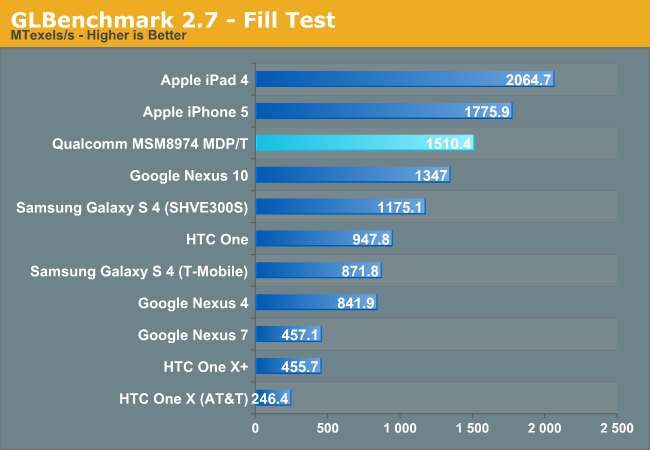
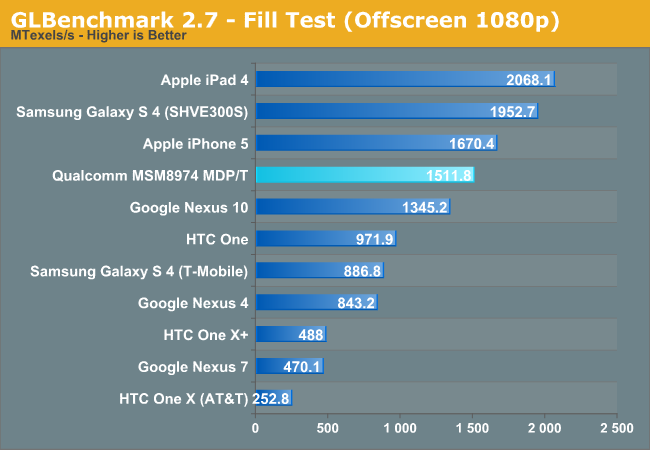
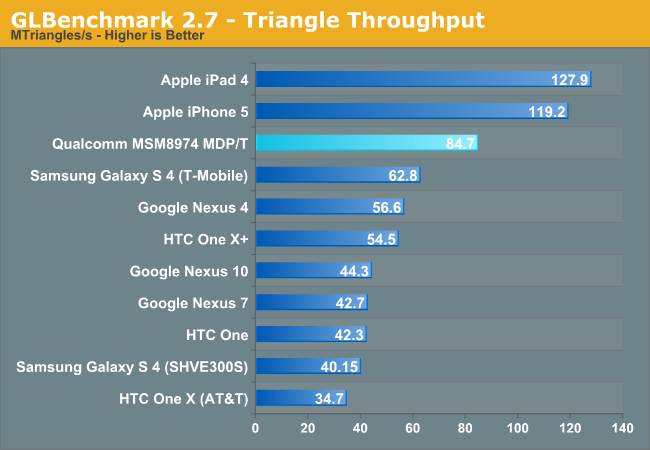

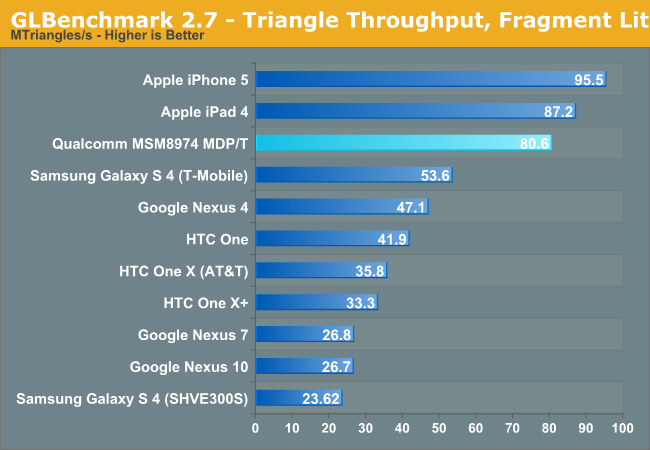
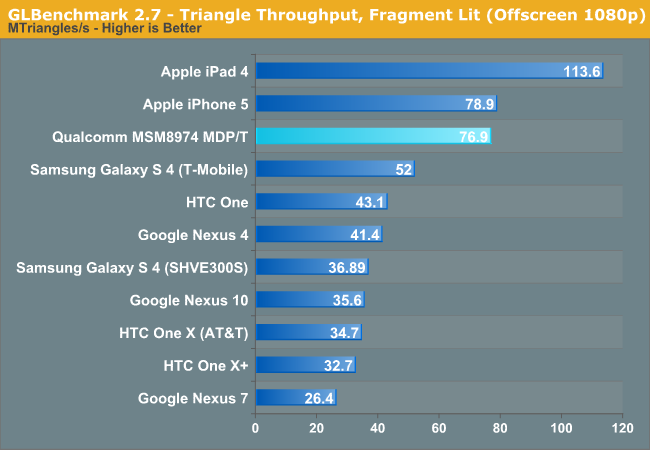
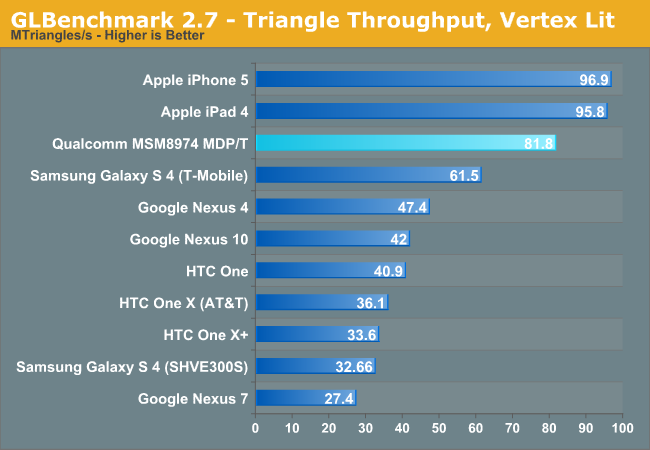
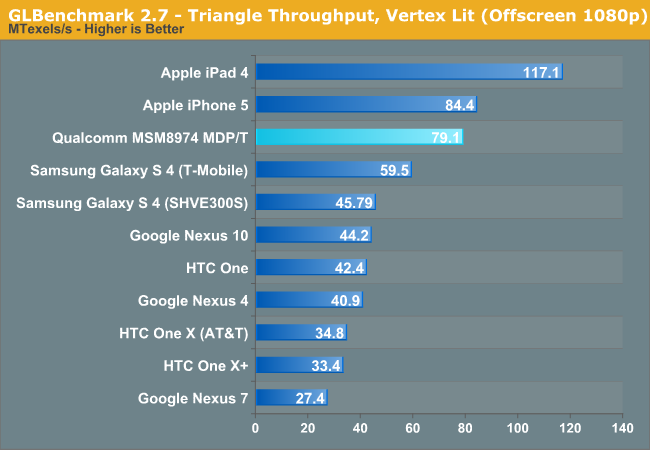
Low level geometry and fill rate metrics are dominated by Imagination Technologies. If we look at the simulated game benchmarks though, Snapdragon 800/Adreno 330 clearly pull ahead:
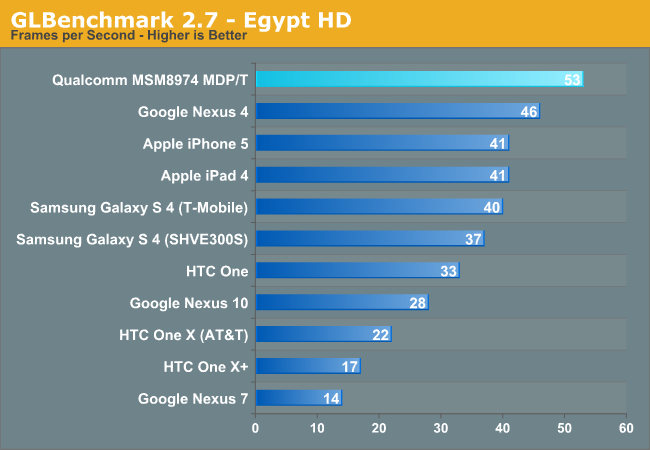
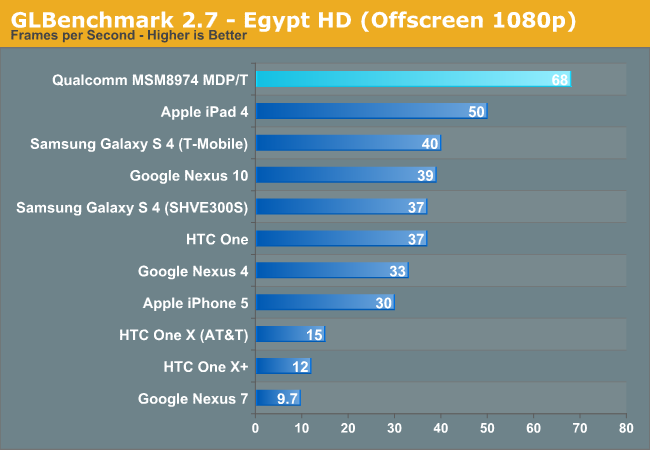
The most impressive results come from one of our most stressful tests. On equal footing, Adreno 330 delivers 62.5% better performance than the iPad 4's PowerVR SGX 554MP4. Note that these are largely shader bound tests. Snapdragon 800 should have less memory bandwidth than Apple's A6X, which could make for some interesting comparisons at high resolutions in actual games.
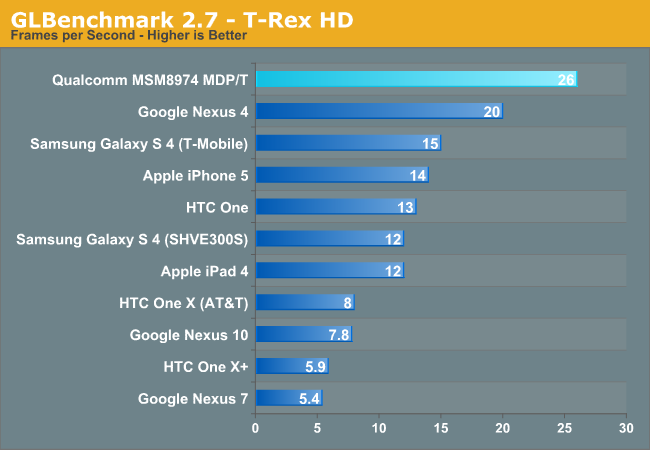
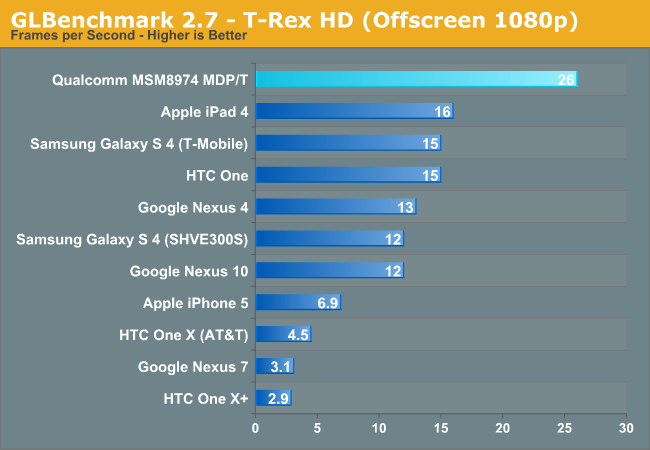










115 Comments
View All Comments
xaml - Wednesday, June 19, 2013 - link
Thanks for sneakily including a comparison of the two Galaxy S4s as well.etre - Wednesday, June 19, 2013 - link
It seems to me that everything is depending on the power budget, as the dual core A15 inside Nexus 10 is faster in some tests then the quad A15 in S4. Or I am wrong ?mczak - Wednesday, June 19, 2013 - link
Yes in some tests (like 3dmark physics) it is very obvious the quad A15 aren't running anywhere close to their max frequency. This is not surprising last time I looked at some power draw figures just two A15 cores at max frequency alone (so without graphics) could already exceed the power budget of the whole chip.So we'll see how that new Snapdragon chip compares once it's inside a smartphone. Should still be plenty fast but some scores might suffer (maybe we're going again to see freezer vs. no freezer results :-)).
sherlockwing - Wednesday, June 19, 2013 - link
The answer is simple, Dual Core A15s are running on Tablet TDP limits(4W) while the Quad core A15 in Exynos Octa are running on Phone TDP limits(<2W).HisDivineOrder - Wednesday, June 19, 2013 - link
These SOC GPU's are rapidly catching up to PC GPU's. They aren't there yet, but they've made impressive strides in just a few short years.Consoles better start more rapid update cycles or they are going to be left behind at this rate.
sireangelus - Wednesday, June 19, 2013 - link
I just wanted to make people realize something:Assassin's creed 1 & 2 run very well on an old x1950pro, and this chip seems to me that it's faster. When they said that soon mobile platform would exceed the(actual but) old consolle generation they weren't kidding.douglord - Wednesday, June 19, 2013 - link
This looks great - but frankly I need to see this vs Tegra 4 and A7. Also - I agree we need to see vs HD5000/HD5200 Haswell.Tegra 4 is probably a toss up performance wise - and will come down to power (which Qualcom normally wins). Kinda makes me sorry I pre-ordered a Shield when this will be in the Note 3 and I could just attach a controller. Hopefully Nvidia can do a better job of getting AAA games to actually support Shield. I'm sick of all the blockbusters being iOS only (or 6 months early).
Apple seems to double performance every year, and with PowerVR 6 - you could get a bigger bump. That would easily surpass this. If AAPL would just come out with a larger screen, I'd go back to iOS this time around.
And IF we see Haswell tablets with 7-9 hours of battery life - I'm not sure all of this stuff doesn't get relegated to the dust bin of history with Intel taking 90%+ of the tablet/hybrid market.
Anyone have any info on Saltwell's GPU? I love my Latitude 10's ability to run full Windows programs - particularly Office. The CPU beats anything in this article and the power use is low enough I get 16 hours of battery life. But the GPU is so far behind all of these other chips even a 2x-3x improvement isn't going to make it competitive. Why can't they throw in whatever Apple is going to use in the A7. They own part of PowerVR too!
aicom - Wednesday, June 19, 2013 - link
I'll be interested to see how the actively-cooled Tegra 4 in Shield performs compared to the standard passively-cooled stuff. I'd suspect that if you're going to be gaming for a while, the Shield may pull away. Tablets and smartphones these days aren't designed to run at full tilt all the time.The most interesting thing about this generation of SoCs to me is the CPU performance. I don't game all that often, so I'd much prefer a device that has CPU performance to spare. It's the opposite of the problem that we had on the desktop years ago. Now we have GPU performance sufficient for UI acceleration, media decoding, and mainstream gaming, but we still have CPU performance that holds the platform back.
krumme - Wednesday, June 19, 2013 - link
No your Atom does not beat anything worthwhile in this world and especially not the s800:http://browser.primatelabs.com/geekbench2/compare/...
"Intel taking 90% of the tablet/hybrid market"
Ahemm. And how exactly are they going to do that. With a usd 150 APU sans LTE/3G integrated?
Speedfriend - Thursday, June 20, 2013 - link
No with a processor offering 4x the performance of anything that ARM offers. Believe it or not, most corporate users want something that can run enterprise level apps, not some jewel swapping game.